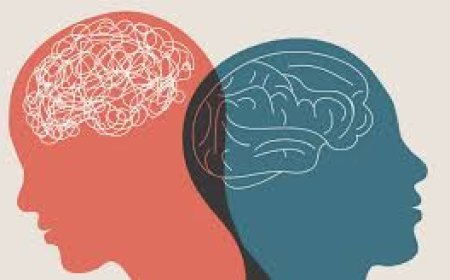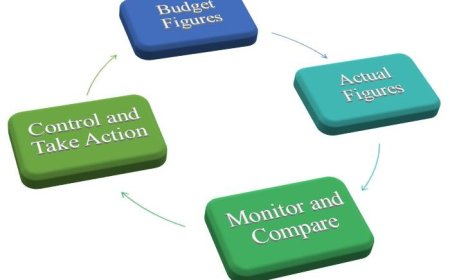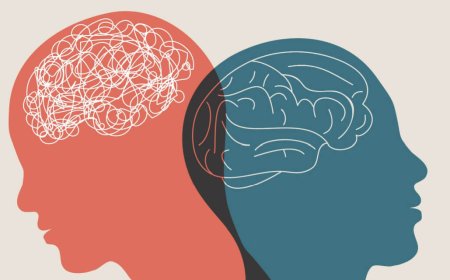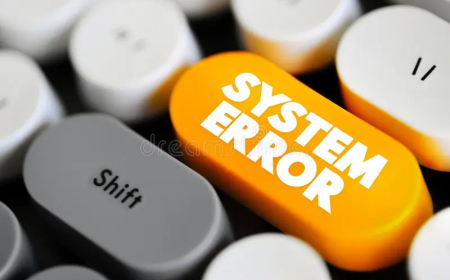The Concept of Mental Disorder
Understanding the concept of mental disorders was often shrouded in stigma and misunderstanding, with many cultures attributing such conditions to supernatural forces or moral failings. However, advancements in psychological research and neuroscience
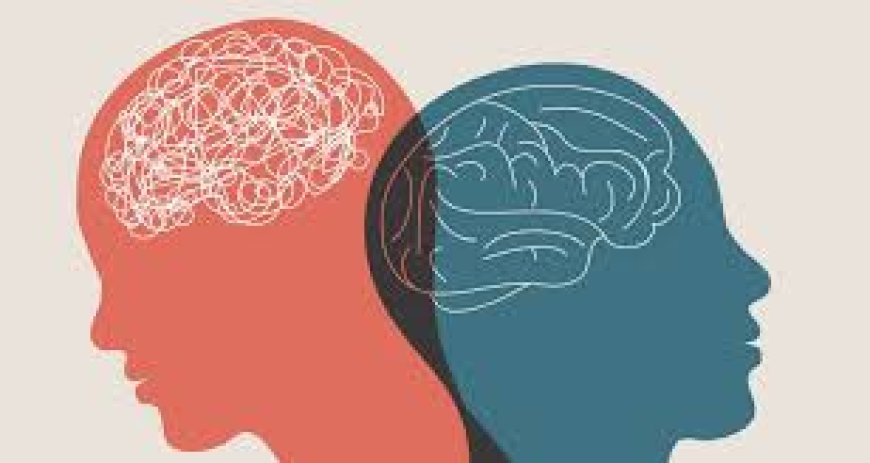
INTRODUCTION
The concept of mental disorder, encompassing a broad range of psychological conditions that affect an individual's thoughts, emotions, and behaviors. Mental disorders can lead to significant distress and impairment in social, occupational, and other areas of functioning. This paper aims to explore the definition, classification, causes, and treatment of mental disorders, drawing upon various scholarly sources and the current understanding in the field of psychology and psychiatry.
Historically, the understanding of mental disorders was often shrouded in stigma and misunderstanding, with many cultures attributing such conditions to supernatural forces or moral failings. However, advancements in psychological research and neuroscience have shifted this perspective towards a more nuanced understanding that recognizes mental disorders as complex interactions of biological, psychological, and environmental factors. This multifaceted approach allows for a more comprehensive classification of mental disorders, which are now categorized into various diagnostic frameworks, such as the Diagnostic and Statistical Manual of Mental Disorders (DSM) and the International Classification of Diseases (ICD). These classifications serve not only to standardize diagnoses but also to facilitate research and treatment.
The causes of mental disorders are equally intricate, often involving a combination of genetic predispositions, neurobiological factors, and psychosocial influences. For instance, research has shown that certain mental health conditions, such as depression and anxiety, may have hereditary components, while environmental stressors like trauma or chronic stress can trigger or exacerbate symptoms. Understanding these causes is crucial for developing effective prevention and intervention strategies.
Treatment modalities for mental disorders have also evolved, encompassing a range of approaches from pharmacological interventions to psychotherapy. Evidence-based practices, including cognitive-behavioral therapy (CBT) and mindfulness-based therapies, have gained prominence due to their effectiveness in addressing various mental health issues.
1. A mental disorder, commonly known as a mental illness, mental health condition, or psychiatric disability, is defined as a behavioral or mental pattern that leads to considerable distress or impairment in personal functioning. These disorders are characterized by clinically significant disturbances in an individual's cognition, emotional regulation, or behavior, frequently within a social context. Such disturbances may manifest as isolated episodes, persist over time, or follow a relapsing-remitting course. There exists a diverse range of mental disorders, each with its own distinct signs and symptoms. It is important to recognize that a mental disorder represents one facet of overall mental health.
2. Mental disorders are typically defined as syndromes characterized by a clinically significant disturbance in an individual's cognition, emotion regulation, or behavior. These disturbances can manifest in various forms, affecting how individuals think, feel, and interact with the world around them. The Diagnostic and Statistical Manual of Mental Disorders (DSM-5) and the International Classification of Diseases (ICD-11) serve as essential frameworks for the classification of these disorders, categorizing them into various groups such as mood disorders, anxiety disorders, psychotic disorders, and personality disorders.
3. According to the fourth edition of the Diagnostic and Statistical Manual of Mental Disorders (DSM-IV), published in 1994, a mental disorder is defined as a psychological syndrome or pattern that is associated with significant distress (such as painful symptoms), functional impairment in one or more critical areas, an increased risk of mortality, or a notable loss of autonomy. It is important to note that this definition excludes normal reactions, such as grief following the loss of a loved one, as well as behaviors that are considered deviant for political, religious, or societal reasons that do not stem from individual dysfunction.
4. In 2013, the American Psychiatric Association (APA) redefined the term mental order as "a syndrome characterized by clinically significant disturbance in an individual's cognition, emotion regulation, or behavior that reflects a dysfunction in the psychological, biological, or developmental processes underlying mental functioning." A similar definition is found in the final draft of ICD-11.
5. Commonly, the terms "mental breakdown" or "nervous breakdown" are utilized by the general public to refer to mental disorders. However, these terms have not been formally defined within established medical diagnostic frameworks such as the DSM-5 or ICD-10 and are largely absent from scientific literature on mental illness. Although "nervous breakdown" lacks a rigorous definition, surveys indicate that it typically refers to a specific acute, time-limited reactive disorder characterized by symptoms such as anxiety or depression, often triggered by external stressors. Many mental health professionals currently describe a nervous breakdown as a mental health crisis.
CLASSIFICATION OF MENTAL DISORDERS
Mental disorders are classified into various categories, primarily based on symptomatology and etiology. Understanding these classifications is crucial for effective diagnosis, treatment, and ongoing research in the field of mental health.
Mood Disorders: These disorders encompass a range of conditions, including major depressive disorder and bipolar disorder, characterized by significant disturbances in mood. Individuals with mood disorders may experience profound sadness, hopelessness, or episodes of mania, which can severely impact their daily functioning and quality of life. Treatment often involves a combination of psychotherapy, medication, and lifestyle changes aimed at stabilizing mood and enhancing emotional resilience.
Anxiety Disorders: Conditions such as generalized anxiety disorder, panic disorder, and specific phobias fall under this category, marked by excessive fear or anxiety. Individuals may find themselves trapped in cycles of worry that hinder their ability to engage in everyday activities. Therapeutic interventions typically include cognitive-behavioral therapy (CBT), exposure therapy, and mindfulness practices, which help individuals, confront and manage their fears effectively.
Psychotic Disorders: This category includes disorders such as schizophrenia, where individuals may experience delusions, hallucinations, and impaired insight. These symptoms can distort an individual’s perception of reality, leading to significant challenges in social and occupational functioning. Treatment often involves antipsychotic medications and psychosocial interventions, which aim to reduce symptoms and improve overall functioning.
Personality Disorders: Characterized by maladaptive patterns of behavior and inner experiences, personality disorders include conditions such as borderline personality disorder and narcissistic personality disorder. These disorders can profoundly affect relationships and self-image. Therapeutic approaches, including dialectical behavior therapy (DBT) and schema therapy, focus on helping individuals develop healthier coping mechanisms and interpersonal skills.
Neurodevelopmental Disorders: This category includes conditions like autism spectrum disorder and attention-deficit/hyperactivity disorder (ADHD), typically diagnosed in childhood and characterized by developmental impairments. Early intervention is critical in these cases, as it can significantly enhance developmental outcomes. Treatment may involve behavioral therapies, educational support, and, in some cases, medication to manage symptoms.
MANAGEMENT/PREVENTION
Management of Mental Disorders
The management of mental disorders involves a combination of therapeutic, pharmacological, and psychosocial interventions tailored to the individual’s unique needs. An integrated approach combining these modalities often yields the best outcomes.
1. Psychotherapeutic Management
Psychotherapy is fundamental in the treatment of many mental health disorders. Several evidence-based therapeutic modalities include:
Cognitive-Behavioral Therapy (CBT): This structured, time-limited therapy focuses on identifying and changing negative thought patterns and behaviors, making it effective for conditions such as anxiety disorders, depression, and PTSD (Hofmann et al., 2012).
Dialectical Behavior Therapy (DBT): This form of cognitive-behavioral therapy is tailored to individuals with borderline personality disorder and focuses on emotional regulation, interpersonal effectiveness, and mindfulness. DBT equips individuals with skills to manage intense emotions and improve relationships, thereby fostering a sense of stability and self-acceptance.
Interpersonal Therapy (IPT): IPT emphasizes improving interpersonal relationships and social functioning, particularly beneficial for depression (Cuijpers et al., 2016). By addressing relational issues, IPT helps individuals build a supportive social network, which is crucial for recovery and long-term mental health.
Mindfulness-Based Therapy: Mindfulness practices help increase awareness of thoughts and feelings, reducing stress and improving emotional regulation. This approach encourages individuals to engage in the present moment, cultivating a non-judgmental awareness that can mitigate symptoms of anxiety and depression.
2. Pharmacological Management
Pharmacological interventions often complement psychotherapeutic approaches, particularly in cases of severe mental disorders. Medications such as antidepressants, mood stabilizers, and antipsychotics can effectively alleviate symptoms and enhance the therapeutic process. The choice of medication should always be personalized, taking into account the individual's specific diagnosis, symptom profile, and potential side effects.
3. Psychosocial Interventions
In addition to therapy and medication, psychosocial interventions play a vital role in the management of mental disorders. Support groups, community resources, and family therapy can provide essential support and foster a sense of belonging. Engaging in activities that promote social interaction and life skills can also enhance resilience and coping mechanisms.
4. Holistic Approaches
In recent years, there has been a growing recognition of the importance of holistic approaches in mental health management. Integrating practices such as yoga, art therapy, and nutritional counseling can address the mind-body connection and promote overall well-being. These methods encourage individuals to explore new avenues for self-expression and healing, ultimately leading to a more comprehensive recovery experience.
PREVENTION
Prevention of Mental Disorders
Preventing the onset of mental disorders is equally important and revolves around identifying risk factors, promoting protective factors, and implementing effective strategies at various levels.
1. Primary Prevention
Primary prevention aims to reduce risk factors and promote mental well-being within populations. Strategies may include:
Mental Health Education: Educational programs in schools and communities regarding mental health awareness, coping strategies, and stress management can foster resilience and reduce stigma associated with seeking help. By integrating mental health education into the curriculum, we can equip individuals with the tools to recognize early signs of distress and encourage open conversations about mental health.
Promotion of Healthy Lifestyles: Initiatives that encourage physical activity, proper nutrition, and sufficient sleep can significantly impact mental health by reducing stress and improving overall well-being. Community-based programs that promote group activities, such as sports and recreational classes, not only enhance physical health but also provide social support, which is crucial for mental resilience.
Crisis Intervention Resources: Offering access to crisis helplines and emergency support can help individuals facing immediate distress and prevent escalation into more severe mental health crises. Establishing a network of trained professionals and volunteers who can provide immediate assistance ensures that those in need have a safety net, reducing the likelihood of long-term mental health issues.
2. Secondary Prevention
Secondary prevention focuses on early detection and intervention to prevent the progression of mental disorders. This involves tailored screening programs in schools, workplaces, and healthcare settings to identify individuals at risk. Regular mental health check-ups can facilitate early intervention, allowing for timely therapeutic measures before symptoms escalate.
Support Groups and Peer Counseling: Creating structured support groups can provide individuals with a platform to share experiences and coping strategies. Peer counseling, where trained individuals with lived experience offer support, can foster a sense of belonging and reduce feelings of isolation.
Workplace Mental Health Initiatives: Employers can play a pivotal role by implementing mental health programs that promote work-life balance, stress management workshops, and access to counseling services. By fostering a supportive work environment, organizations can mitigate stress-related issues and enhance employee well-being.
Community Engagement: Engaging communities in mental health initiatives can create a culture of support and awareness. Local events, workshops, and campaigns can mobilize resources and encourage community members to look out for one another, thereby reinforcing protective factors against mental disorders.
3. Tertiary prevention
Tertiary prevention aims to reduce the impact of diagnosed mental disorders through rehabilitation and recovery strategies. Approaches include:
· Comprehensive Treatment Plans: Integrated care models that address both mental health and physical health needs can provide holistic support for individuals experiencing chronic mental health issues.
· Long-term Follow-Up Services: Regular follow-up care can reduce relapse rates and help sustain recovery, ensuring that individuals have ongoing access to resources and support.
PREDISPOSITION FACTORS
Mental disorders are complex conditions influenced by a myriad of factors that can predispose individuals to develop such disorders. These predisposition factors can be classified into several categories: biological, psychological, environmental, and social. Understanding these factors is crucial for identifying at-risk populations and implementing effective prevention and intervention strategies.
1. Biological Factors
Biological factors encompass genetic, neurobiological, and physiological elements that may increase susceptibility to mental disorders.
· Genetic Predisposition: Familial studies indicate that many mental disorders have a genetic component. For instance, individuals with a family history of mood disorders, schizophrenia, or anxiety disorders are at a higher risk of developing similar conditions themselves (McGuffin et al., 2003). Twin and adoption studies have further established that genetics play a significant role in conditions like bipolar disorder and schizophrenia.
· Neurobiological Factors: Neurotransmitter imbalances, particularly involving serotonin, dopamine, and norepinephrine, can significantly influence mood and behavior. Such imbalances are linked to various mental health conditions, including depression and anxiety (Insel & Cuthbert, 2015).
· Brain Structure and Function: Research has shown that abnormalities in specific brain regions, such as the amygdala and prefrontal cortex, can be implicated in mood regulation and emotional processing, affecting an individual's vulnerability to mental disorders (Davidson et al., 2002).
2. Psychological Factors
Psychological factors include cognitive, emotional, and behavioral patterns that can predispose individuals to mental disorders.
· Cognitive Styles: Maladaptive thought patterns, such as catastrophizing or negative self-assessment, can increase vulnerability to depression and anxiety disorders. Cognitive-behavioral theories emphasize that these negative thinking patterns can lead to emotional distress and dysfunctional behaviors (Beck, 1976).
· Childhood Trauma and Adversity: Adverse childhood experiences, including abuse, neglect, or parental separation, have been strongly correlated with the risk of developing mental disorders later in life. Such experiences can disrupt normal psychological development and lead to long-term emotional difficulties (Felitti et al., 1998).
· Personality Traits: Certain personality characteristics, such as high levels of neuroticism or low resilience, may predispose individuals to mental health issues. These traits can affect emotional regulation and coping strategies in stressful situations (Nolen-Hoeksema, 2001).
3. Environmental Factors
Environmental influences can significantly shape an individual's mental health and may act as triggers for the onset of mental disorders.
· Socioeconomic Status: Individuals living in poverty or experiencing economic hardship often face increased stressors, including limited access to healthcare, education, and social support, which can heighten the risk of mental disorders (Lorant et al., 2003).
· Substance Abuse: The use of drugs and alcohol can exacerbate or precipitate mental health disorders. For example, long-term substance abuse can lead to changes in brain chemistry, increasing the likelihood of developing conditions such as depression or anxiety (Kendler et al., 1996).
· Chronic Stress and Trauma: Ongoing exposure to stressors, such as discrimination, violence, or relationship conflict, can increase the risk of developing mental health issues. Stress can have cumulative effects, weakening an individual's coping mechanisms (McEwen, 1998).
4. Social Factors
Social connections and support systems are critical in shaping mental health, and deficits in these areas can predispose individuals to disorders.
· Isolation and Loneliness: A lack of social support or feelings of isolation can significantly affect mental health. Research indicates that social isolation can lead to increased incidences of depression and anxiety (Cacioppo & Cacioppo, 2018).
· Stigmatization: Societal stigma associated with mental health disorders can deter individuals from seeking help and can lead to lower self-esteem and increased distress, further exacerbating mental health conditions (Corrigan, 2004).
· Cultural Influences: Cultural norms and beliefs regarding mental health can impact how individuals perceive their own mental health struggles and whether they seek help. Cultures that stigmatize mental illness may lead individuals to avoid treatment or acknowledge their condition (Sue et al., 2012).
RISK FACTORS
Mental disorders affect a significant portion of the global population and can arise due to a complex interplay of various risk factors. Identifying and understanding these risk factors is essential for effective prevention, early detection, and management of mental health conditions. The risk factors for mental disorders can be broadly categorized into biological, psychological, environmental, and social factors.
1. Biological Risk Factors
Biological factors are intrinsic to an individual's physiology and genetic makeup, playing a crucial role in the predisposition to mental disorders.
· Genetics: Family history of mental disorders is one of the most significant risk factors. Individuals with a first-degree relative (such as a parent or sibling) who has experienced a mental disorder are at a higher risk of developing similar conditions, suggesting a hereditary component (Sullivan et al., 2000).
· Neurotransmitter Imbalances: Abnormalities in the levels of neurotransmitters (e.g., serotonin, dopamine, and norepinephrine) can influence mood regulation and contribute to disorders such as depression, anxiety, and schizophrenia (Insel & Cuthbert, 2015).
· Brain Structure and Function: Structural changes in the brain, particularly in regions associated with emotion regulation, memory, and cognitive function (such as the amygdala and prefrontal cortex), can increase vulnerability to mental health disorders (Davidson et al., 2000).
· Hormonal Factors: Hormonal changes, especially those occurring during puberty, pregnancy, or menopause, can influence emotional health and may trigger mood disorders in susceptible individuals.
2. Psychological Risk Factors
Psychological factors include cognitive styles, coping mechanisms, and past traumatic experiences that can significantly influence an individual's mental health.
· Cognitive Patterns: Individuals with negative thinking styles, such as catastrophizing, pessimism, or low self-esteem, are at a higher risk of developing mental disorders like depression and anxiety (Beck, 1976).
· History of Trauma: Exposure to trauma, such as emotional or physical abuse, neglect, or severe life events (e.g., accidents or loss of a loved one), is a powerful risk factor for various mental disorders, including post-traumatic stress disorder (PTSD) and depression (Brewin et al., 2009).
· Adverse Childhood Experiences (ACEs): A history of ACEs, including household dysfunction, parental separation, or household substance abuse, significantly correlates with later mental health issues (Felitti et al., 1998).
· Poor Coping Skills: Individuals with ineffective coping mechanisms, who struggle to manage stress and adversity, may be at increased risk for developing mental disorders (Nolen-Hoeksema, 2001).
3. Environmental Risk Factors
Environmental factors can significantly impact mental health, influencing both exposure to stressors and access to resources.
· Socioeconomic Status: Individuals facing economic hardships and living in poverty are at a heightened risk for mental disorders, primarily due to chronic stress, lack of access to resources, and social marginalization (Lorant et al., 2003).
· Substance Abuse: The use of drugs and alcohol can exacerbate or trigger mental health disorders. For instance, substance use may lead to exacerbated symptoms of existing conditions or contribute to the development of new disorders (Kendler et al., 1996).
· Chronic Stress: Ongoing exposure to stressors, such as workplace pressure, relationship problems, or caregiving responsibilities, can lead to mental exhaustion and increase the likelihood of developing mental disorders (McEwen, 1998).
· Living Environment: Exposure to violence, crime, or social instability in one's environment can increase feelings of insecurity and anxiety, raising the risk of mental health issues (Haw et al., 2004).
4. Social Risk Factors
Social dynamics and interpersonal relationships play a critical role in mental health, with certain patterns enhancing risk.
· Social Isolation and Loneliness: A lack of social connections or feelings of loneliness are associated with increased rates of anxiety and depression. Strong social support systems are protective, while isolation can be detrimental (Cacioppo & Cacioppo, 2018).
· Stigmatization: The stigma and discrimination associated with mental health conditions can dissuade individuals from seeking help and can lead to feelings of shame and inadequacy, worsening mental health outcomes (Corrigan, 2004).
· Relationship Issues: Family conflict, unhealthy relationships, and poor communication patterns can contribute to the development of mental disorders, particularly in individuals predisposed to such conditions (Kawachi & Berkman, 2001).
American Psychiatric Association. (2013). Diagnostic and Statistical Manual of Mental Disorders (5th ed.). Arlington, VA: American Psychiatric Publishing.
Beck, A. T. (1976). Cognitive Therapy and the Emotional Disorders. New York: Penguin Press.
Corrigan, P. W., & Watson, A. C. (2002). Understanding the stigma of mental illness. World Psychiatry, 1(1), 16-20.
Insel, T. R., & Cuthbert, B. N. (2015). Brain disorders? Precisely. Science, 348(6237), 499-500.
Morris, J., Christopher, R., & McCarthy, J. (2010). The interaction between risk factors in the development of mental disorders. Life Sciences, 86(25-26), 858-865.
Muench, F., & Haug, N. A. (2010). Medication adherence in patients with mental disorders: The importance of behavioral strategies. Psychiatric Services, 61(5), 444-451.
World Health Organization. (2019). International Classification of Diseases for Mortality and Morbidity Statistics (11th Revision). Geneva: World Health Organization.
Cuijpers, P., Karyotaki, E., Weitz, E., Andersson, G., Hollon, S. D., & van Straten, A. (2016). The effects of psychotherapies for major depression in adults on remission, recovery, and improvement: A meta-analysis. Journal of Affective Disorders, 202, 511-517.
Hofmann, S. G., Asnaani, A., Vonk, I. J. J., Sawyer, A. T., & Fang, A. (2012). The Efficacy of Cognitive Behavioral Therapy: A Review of Meta-analyses. Cognitive Therapy and Research, 36(5), 427-440.
Beck, A. T. (1976). Cognitive Therapy and the Emotional Disorders. New York: Penguin Press.
Cacioppo, J. T., & Cacioppo, S. (2018). The growing problem of loneliness. The Lancet, 391(10116), 426.
What's Your Reaction?
 Like
0
Like
0
 Dislike
0
Dislike
0
 Love
0
Love
0
 Funny
0
Funny
0
 Angry
0
Angry
0
 Sad
0
Sad
0
 Wow
0
Wow
0










